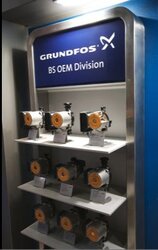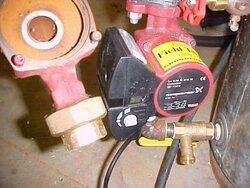I know there are many ECM circs in Europe- but just barely beginning to arrive here- Wilo Stratos and Grundfos Magna (with the Magna seemingly being too big and expensive to sanely think about for normal residential use)
anything else out there that anyone can point me to that's roughly in the residential size category?
the main appeal to me of the ECMS is much higher electrical efficiency + speed control
also, any opinions on what the reliable lifespan of an ECM circ is likely to be compared to a standard "wet can PSC" circulator?
for that matter, what are the usual "failure points" in consumer-grade wet can circulators?
buying a more expensive circ that'll gradually pay for itself with electric savings + longer life is something I am open to thinking about- but if a much more expensive ECM circ is unlikely to outlast a "regular" one, it's harder to consider justifying
thanks
anything else out there that anyone can point me to that's roughly in the residential size category?
the main appeal to me of the ECMS is much higher electrical efficiency + speed control
also, any opinions on what the reliable lifespan of an ECM circ is likely to be compared to a standard "wet can PSC" circulator?
for that matter, what are the usual "failure points" in consumer-grade wet can circulators?
buying a more expensive circ that'll gradually pay for itself with electric savings + longer life is something I am open to thinking about- but if a much more expensive ECM circ is unlikely to outlast a "regular" one, it's harder to consider justifying
thanks




